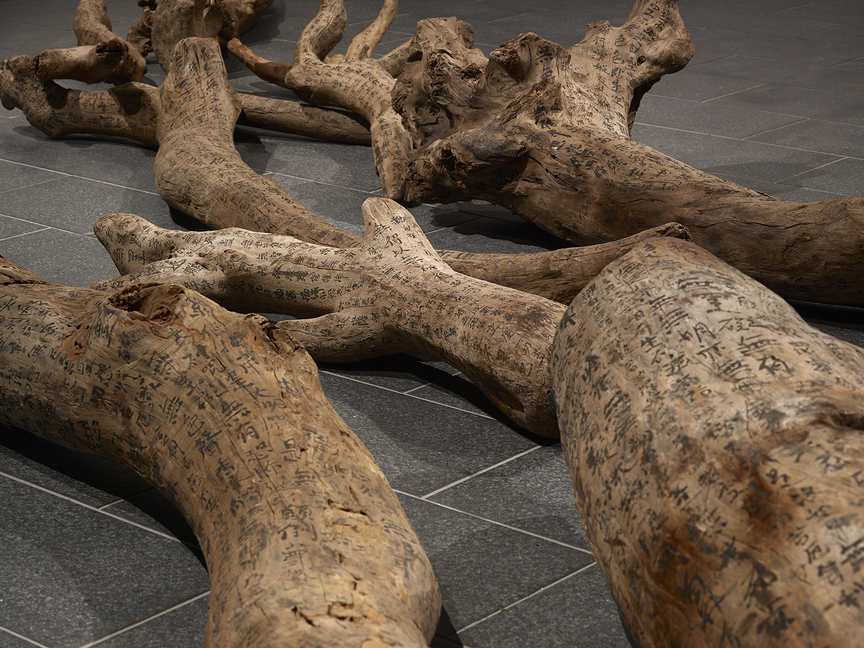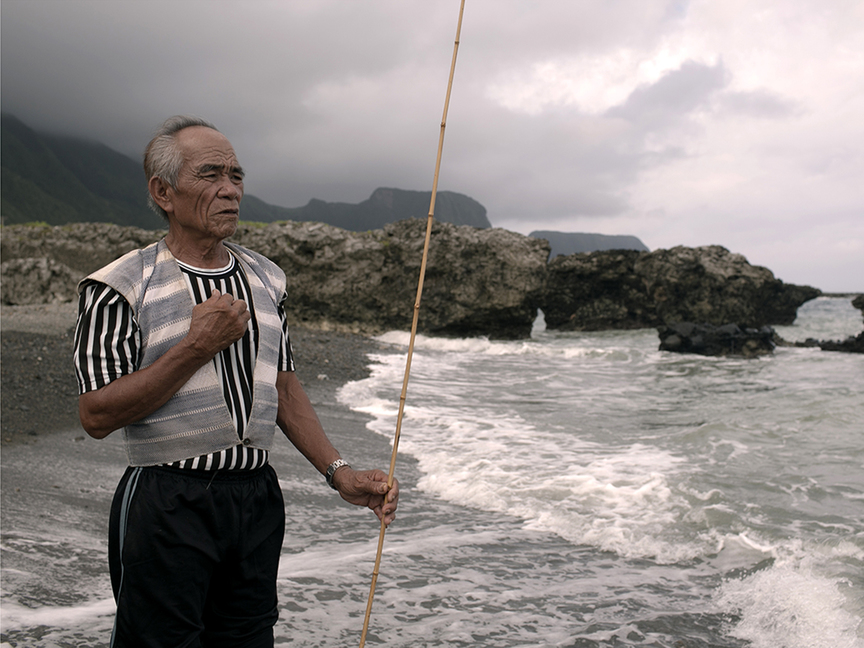-
From Current Issue
-
- Editor’s Letter Fire in the Heart
- Reviews I Gusti Ayu Kadek Murniasih
- Reviews 11th Seoul Mediacity Biennale: “One Escape at a Time”
- Dispatch Networked China
- One on One Monira Al Qadiri on Yukio Mishima
- Essays The rise of independent art spaces in pandemic-era Shanghai
- Features Tuan Andrew Nguyen
- Table of Contents
- Web Exclusives
- Archive
- Subscribe

R
E
V N
E
X
T
Installation view of CHARWEI TSAI’s “Bulaubulau” at the Centre for Chinese Contemporary Art, Manchester, 2018–19. Photo by Michael Pollard. Courtesy the artist and Centre for Chinese Contemporary Art.
Taiwanese artist Charwei Tsai’s first solo exhibition in the United Kingdom, “Bulaubulau,” at the Centre for Chinese Contemporary Art in Manchester, drew upon universal yet highly personal concerns surrounding indigenous communities in Taiwan. Utilizing a range of natural and manmade materials in her practice, the artist comments on both the tangible and intangible threats to the livelihood of these communities.
Upon entering the exhibition space, visitors faced large pieces of driftwood occupying the center of the floor. On closer inspection, inscriptions of the Heart Sūtra, a well-known Buddhist scripture on Enlightenment, become visible. Although Tsai does not identify as a religious artist, her works often apply Buddhist concepts of emptiness and repetition, as evidenced in Driftwood (2011). Highlighting the sustainable practices of Taiwan’s indigenous communities, who collect the wood after typhoons and reuse them to build houses, the sculptural work becomes a meditation on the destructive yet also regenerative qualities of natural disasters. By rewriting phrases from the Heart Sūtra in ink onto the debris, Tsai further demonstrates ideas of impermanence and change as, over time, these inscriptions will fade. Echoing this contemplation of emptiness and flux, We Came Whirling Out of Nothingness (2018) gradually disperses Buddhist text into the void via scattered Chinese characters written over watercolor swirls on rice paper. Imitating the natural forms found on our fingerprints, plant structures, animal features and our galaxy at large, Tsai looks at existence as a cycle of repeated days, rituals and thoughts.
On the opposite wall was a series of hand-inscribed photographs. In “Lanyu” (2012), the Heart Sūtra appears in less obvious detail than in Driftwood, surreptitiously written alongside the crevices of rocks and rippling water in images that capture different states of the sea surrounding the Lanyu Island of Taiwan, home to the indigenous Tao tribe. These photographs document the changing seascapes in the aftermath of a typhoon that battered the island in 2012. For Tsai, writing on various surfaces that recall natural changes and patterns is integral to her process of contemplating the Buddhist notion of emptiness in relation to tangible geography.
The exhibition concluded with two adjacent projected films, Bulaubulau (2018) and Lanyu: Three Stories (2012). The first video follows an indigenous community in Bulaubulau Village, Yilan. Pairing scenic shots of the tribe’s natural surroundings with a voiceover narration by community member, Kwali, who founded a vocational school in the village, the video documents the various threats imposed on traditional indigenous values and practices, from natural disasters, such as typhoons, to socioeconomic issues, including the limited opportunities for education and employment. Bulaubulau recounts the community’s efforts to protect their environment, as well as to break the vicious cycle of urban migration disrupting the continuation of traditional ways of life.
Lanyu: Three Stories is composed of three short videos played consecutively: Lanyu Seascapes, Shi Na Paradna and Hair Dance. Centered on the Tao tribe, the work delves deeper into the relationship indigenous communities have with nature, spirituality and the modern world. In the first vignette, featuring shots of Lanyu’s rugged coastal landscape, subtitles explain how the constant change embodied by the natural surroundings has inspired the locals to live from moment to moment. However, with the intrusion of a Taiwanese power company, the coast has been turned into a temporary nuclear-waste storage facility. To this day, despite many protests by local residents, radioactive leaks seep into the sea. Shi Na Paradna depicts a wizened man performing a seaside prayer ritual to retrieve his son’s “lost soul” from the sea. The final video shows a sensuous dance by the tribal women, who emulate the movement of crashing waves with their long hair. This sacred ritual is also performed on the shore and is meant to ensure the safe return of village men who have gone out to sea. Interweaving practices from the past and issues of the present, the film reflects upon the constantly changing world inhabited by the tribe, where the members dance between their ancestral histories and the infiltration of modern science and technology.
Charwei Tsai’s “Bulaubulau” is on view at the Centre for Chinese Contemporary Art, Manchester, until January 20, 2019.
To read more of ArtAsiaPacific’s articles, visit our Digital Library.




















